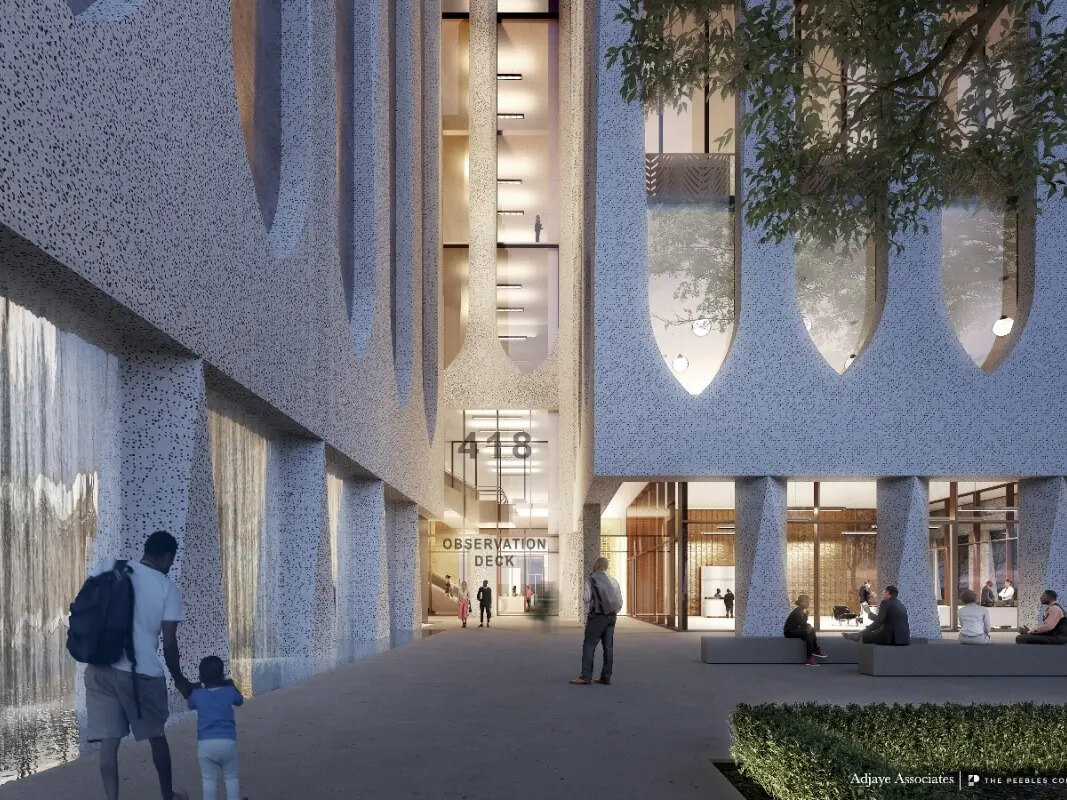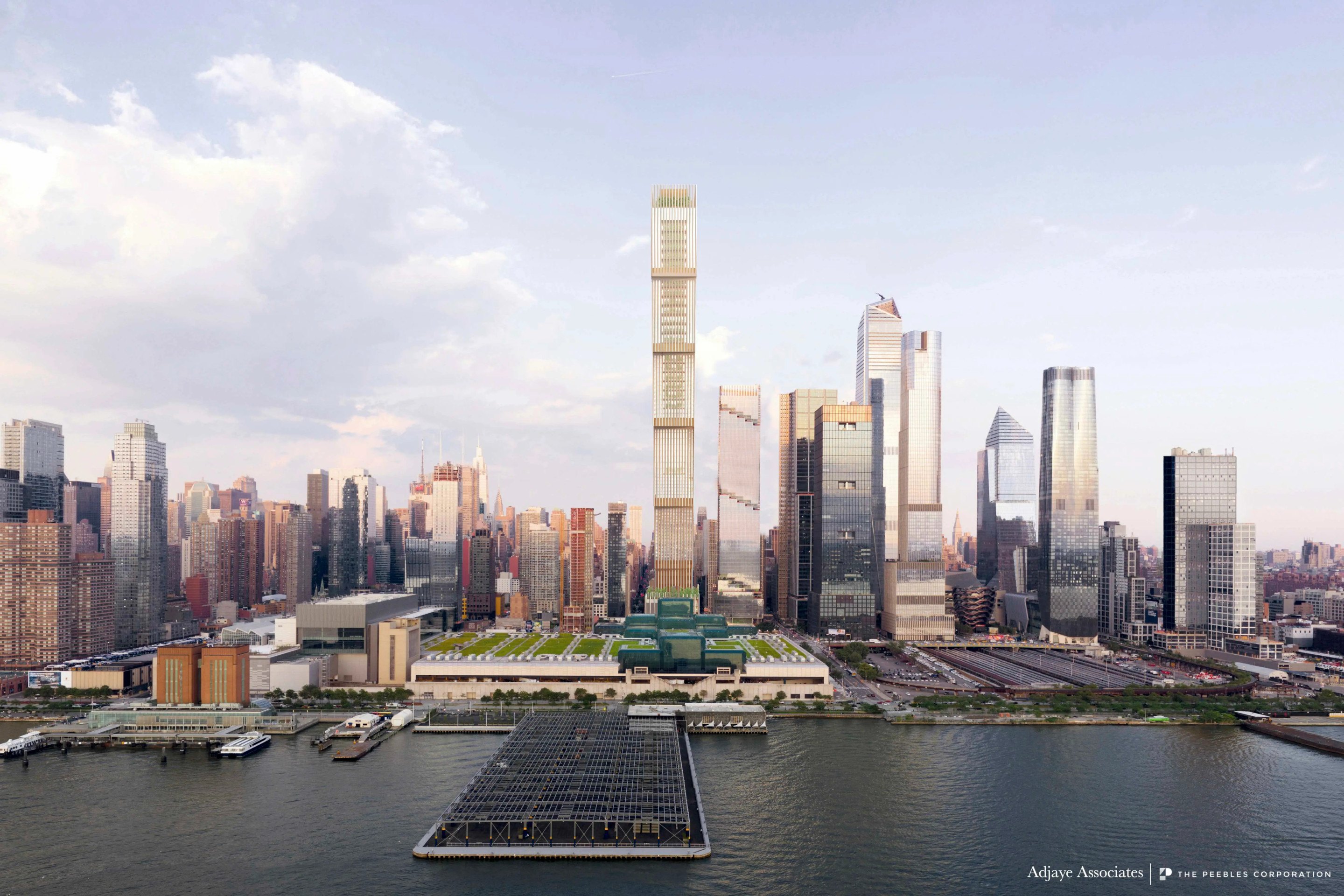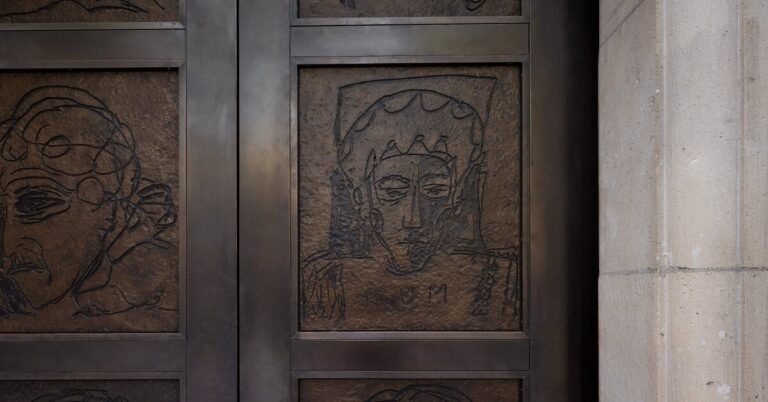Adjaye Associates’ supertall Affirmation Tower doubtful after RFP is pulled
Back in October of 2021, news broke that Adjaye Associates had been tapped for a team competing to fill Site K, a vacant, full-block plot up for development by the State of New York across from the Jacob K. Javits Center in Manhattan between West 35th and West 36th Streets. What they came up with was a cantilevering supertall tower that would extend further out over 11th Avenue as it rose; dubbed Affirmation Tower, the project, if built, would top out at 1,663 feet, the Western Hemisphere’s tallest.
Although it was just one proposal for the site shown to the Empire State Development Corporation, Affirmation Tower drew attention both for its striated design, inverted arches, extreme height, and diversity bona fides. Backed by The Peebles Corporation, if built, the Affirmation Tower would be New York City’s first majority Black developed, designed, and constructed projects, with the McKissack Group already tapped for construction. Residential and commercial developer Exact Capital and Steven Witkoff, founder of the Witkoff Group, also backed the proposal.

However, the 2-million-square-foot tower’s programming may have led to it getting shelved. Developers had planned for Affirmation Tower to hold commercial offices, two hotels, a skating rink, observation deck, a theater, outdoor space, and a new headquarters for the Mid-Manhattan NAACP branch. Not among the plans was affordable housing, an issue raised by Community Board 4 at the time.
It appears Governor Kathy Hochul agreed, as the request for proposal to develop the site was rescinded on December 21, 2021. The original RFP was issued in March of 2021 under former the tenure of former governor Andrew Cuomo, with the intent to complement the Javits Center and encourage traffic to the area; a hotel would have fit that bill.
After Cuomo resigned last August and then-Lieutenant Governor Hochul took his place, things changed. In the December statement from the Empire State Development Corporation’s acting commissioner Hope Knight, the department announced that the RFP for Site K would be reassessed to potentially include more housing:
“In light of today’s changed economic environment and in keeping with Governor Hochul’s commitment to building a thriving and equitable New York, Empire State Development is rescinding the current RFP for Site K, one of the last remaining State-owned parcels in Manhattan, to reassess development priorities and solicit more input from the local community and other stakeholders. It is critical that this site fulfill the Governor’s goal of delivering on the needs of New Yorkers today and into tomorrow.”
As of February 2022, the state hasn’t released an updated vision for the plot. But in an interview with The Real Deal on February 8, Peebles lamented that housing would be “wasted” on the site, saying that hotels would help draw more traffic to the Javits Center. A commercial project at the same site would likely be much smaller, as the floor area ratio of residential buildings there would be capped at 12, versus the 24 allowed for commercial projects.

As for the development team’s outlook for the project? A representative for the group sent AN the following statement:
“We view the rescinding of the Site K RFP as temporary and the Affirmation Tower team remains fully committed to addressing the new goals of the governor and community. We remain undeterred in our efforts to transform New York City’s commercial real estate industry by meeting this historic moment in time two-fold: building a landmark project with a diverse team that reflects NYC and the country and makes a statement that New York is open for business to everyone while simultaneously pulling us out of a global pandemic and providing women and minority owned businesses with an unprecedented billion-dollars in contracts. The continued overwhelming broad-based support Affirmation Tower has received from the community, the city, the state, the country, and the world further demonstrates that the time for a skyscraper designed, developed and built by African-Americans is right now.”


